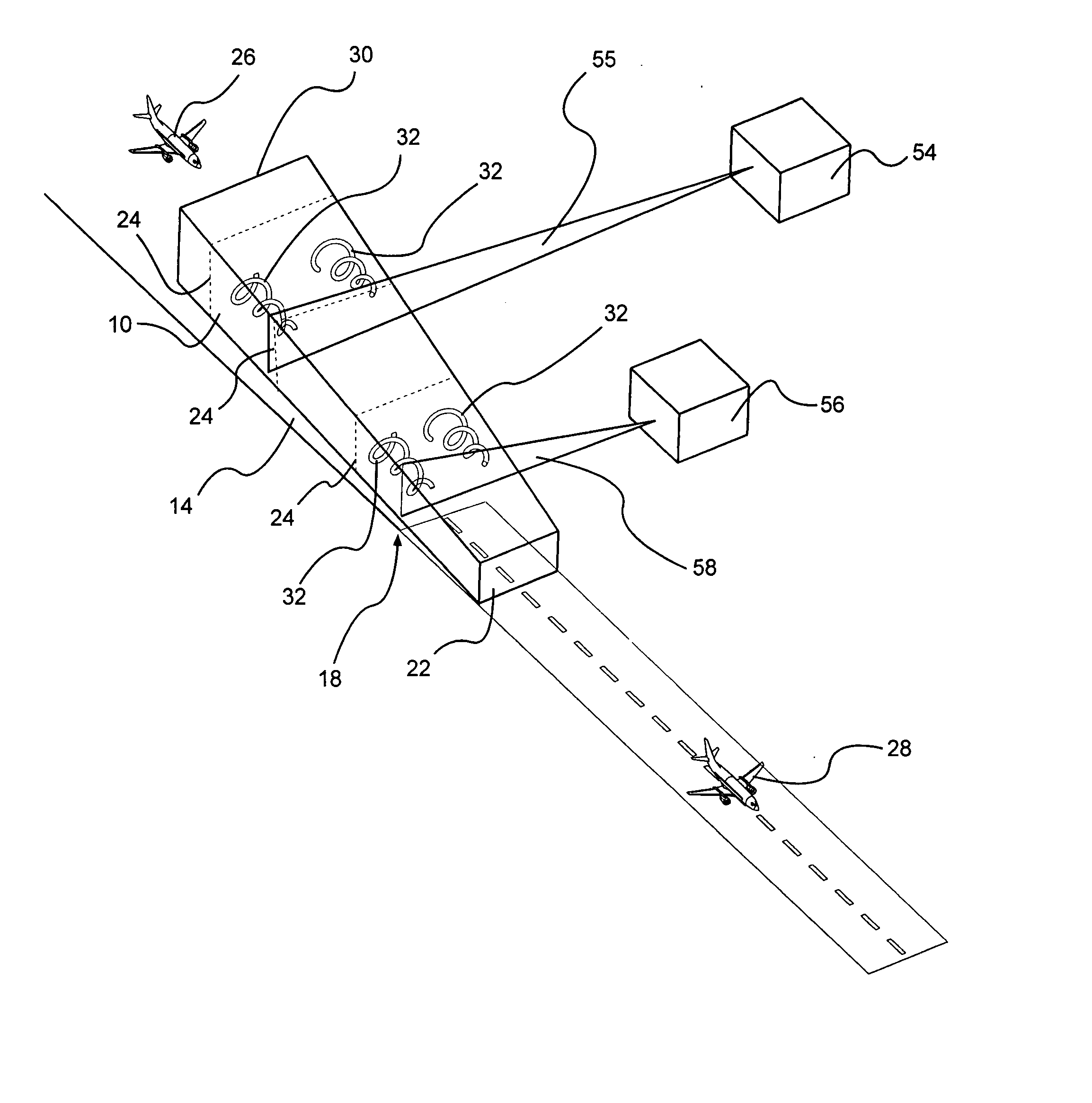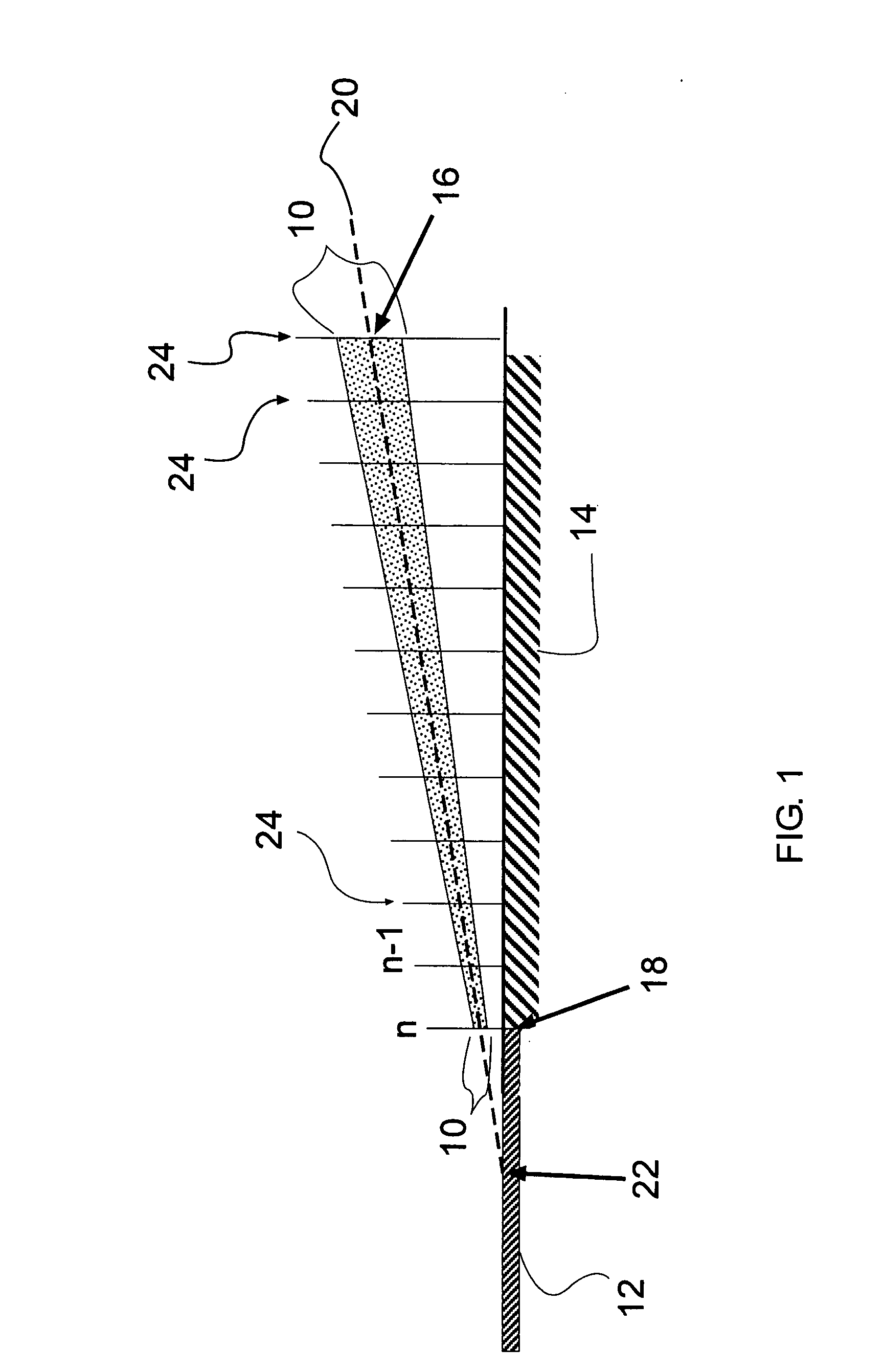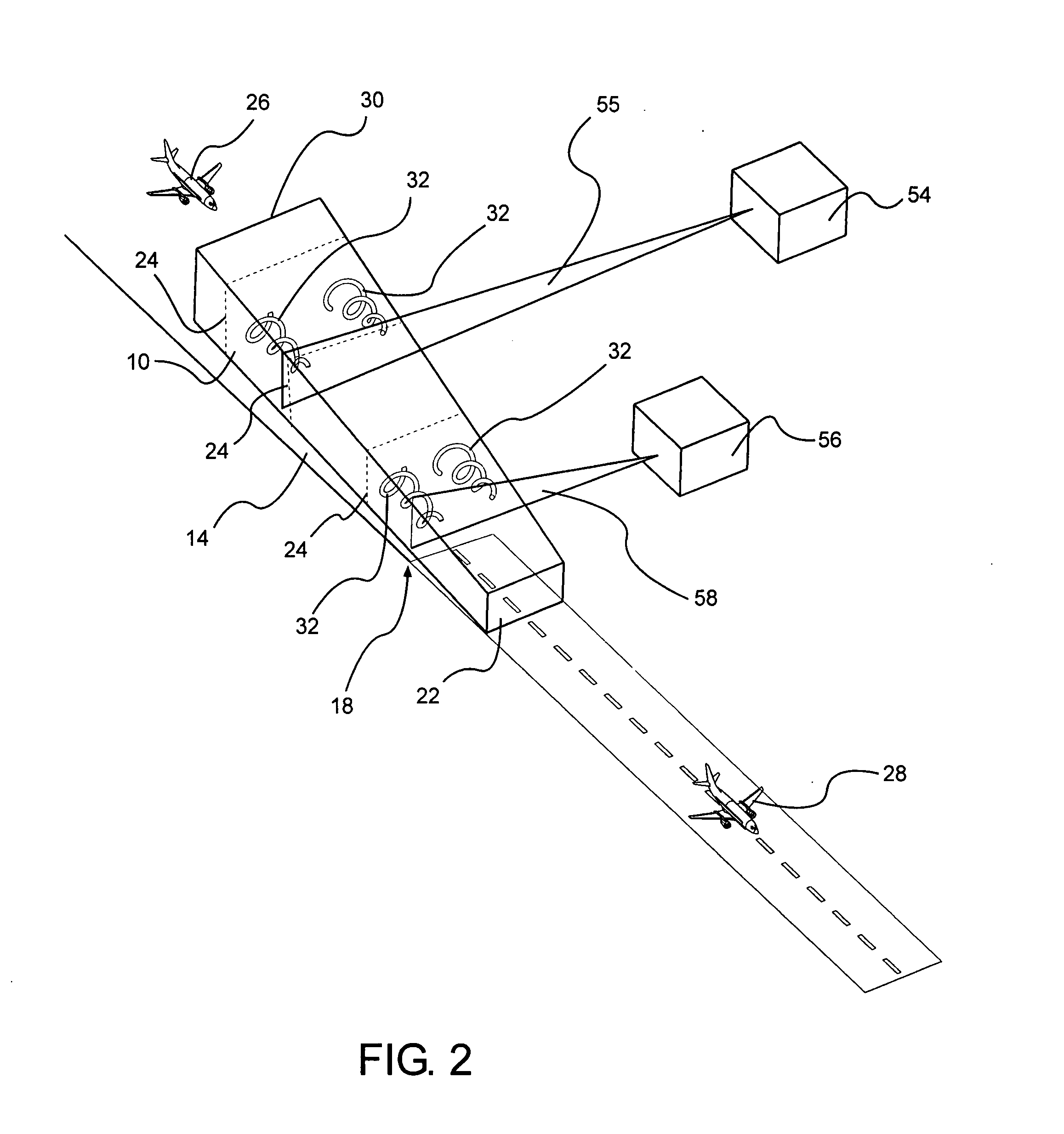Aircraft wake safety management system
a safety management system and wake technology, applied in the field of aircraft wake safety management system, can solve the problems of large transport airplanes flying slowly on final approach and initial departure, man-made atmospheric hazard to aircraft known as wake turbulence, and the greatest hazard of air traffic delays
- Summary
- Abstract
- Description
- Claims
- Application Information
AI Technical Summary
Benefits of technology
Problems solved by technology
Method used
Image
Examples
Embodiment Construction
[0021] Persons of ordinary skill in the art will realize that the following disclosure is illustrative only and not in any way limiting. Other embodiments of the invention will readily suggest themselves to such skilled persons having the benefit of this disclosure.
[0022] The present invention solves the problems of the prior art by comparing the path ahead of a following aircraft to the predicted location of the wake vortices left by the leading aircraft, providing flow compatible guidance to avoid potential conflicts with the wake vortices, validating through measurement the predicted wake vortex locations at critical points on the flight path, using a combination of active and passive wake vortex sensors to measure wake vortex locations, and providing information to air traffic controllers when weather conditions will require a reversion to wake spacing procedures between arriving and departing aircraft.
[0023] The present invention is an aircraft wake safety management system t...
PUM
 Login to View More
Login to View More Abstract
Description
Claims
Application Information
 Login to View More
Login to View More - R&D
- Intellectual Property
- Life Sciences
- Materials
- Tech Scout
- Unparalleled Data Quality
- Higher Quality Content
- 60% Fewer Hallucinations
Browse by: Latest US Patents, China's latest patents, Technical Efficacy Thesaurus, Application Domain, Technology Topic, Popular Technical Reports.
© 2025 PatSnap. All rights reserved.Legal|Privacy policy|Modern Slavery Act Transparency Statement|Sitemap|About US| Contact US: help@patsnap.com



